1min 16s Novice Spanish Chinese
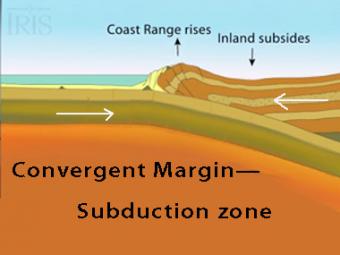
How do megathrust earthquakes generate a tsunami?
In this animation, we are showing an ocean/continent convergent boundary at the leading edge of the plate. We see the denser oceanic plate diving beneath the continental plate. The down-going oceanic plate eventually warms up to the temperature of the surrounding mantle. Such destruction (recycling) of oceanic plates occurs along convergent boundaries where plates collide and an oceanic plate is subducted. (This animation does not address volcanoes formed inboard of the boundary where water released from the oceanic plate facilities magma production in the mantle wedge beneath the continent.)
CLOSED CAPTIONING: A .srt file is included with the download. Use appropriate media player to utilize captioning.
Denser oceanic plate dives beneath the continental plate. Plates are locked by high friction. Over time, friction is overcome in process called elastic rebound Sudden movement of overlying plate generates a tsunami
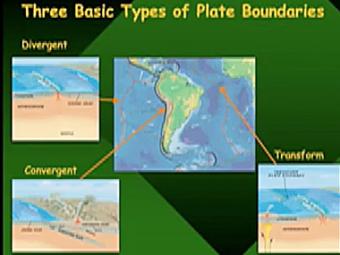
Video lecture covers three basic types of tectonic plate boundaries.
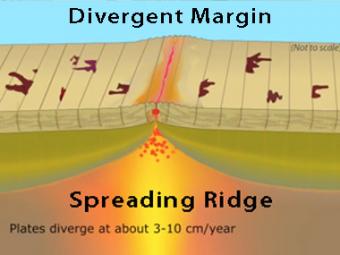
New oceanic crust is created at this boundary when basalt magma, formed in the mantle, rises into fractures in the crust and solidifies. Spreading ridges are high elevation because the young oceanic plate at the ridge crest is hot and less dense than the older, colder and more dense plate on the flanks of the ridge.
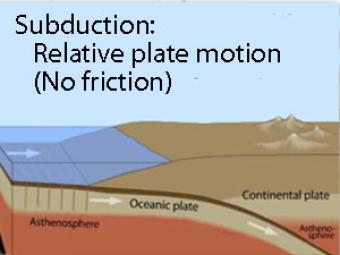
Oblique view of a highly generalized animation of a subduction zone where an oceanic plate is sliding beneath a continental plate with no friction just to show the relative motion between the plates..
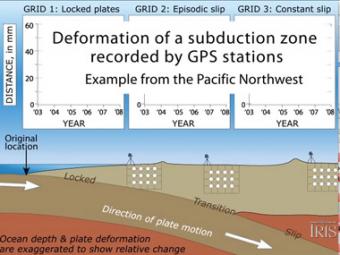
Subduction zones show that there are 3 distinct areas of movement in the overlying plate:
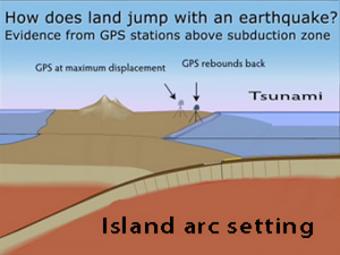
GPS records the movement of the leading edge of the overlying continental plate in a subduction zone. The plates are locked and the overlying plate is forced back. When friction is overcome and strain is released, the GPS receiver will snap back toward its original position.
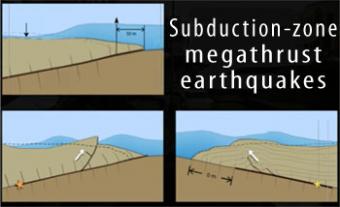
Subduction-zone megathrust earthquakes, the most powerful earthquakes in the world, can produce tsunamis through a variety of structures that are missed by simple models including: fault boundary rupture, deformation of overlying plate, splay faults and landslides. From a hazards viewpoint, it is critical to remember that tsunamis are multiple waves that often arrive on shore for many hours after the initial wave.

Subduction-zone megathrust earthquakes, the most powerful earthquakes in the world, can produce tsunamis through a variety of structures that are missed by simple models including: fault boundary rupture, deformation of overlying plate, splay faults and landslides. From a hazards viewpoint, it is critical to remember that tsunamis are multiple waves that often arrive on shore for many hours after the initial wave.
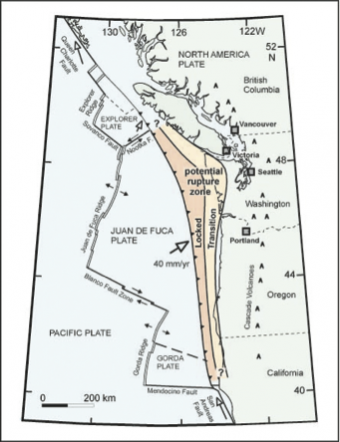
Students work in small groups to analyze and interpret Global Positioning System (GPS) and seismic data related to “mysterious ground motions” first along the northern California coastline, and then in British Columbia. This activity emphasizes the analysis and synthesis of multiple types of data and introduces a mode of fault behavior known as Episodic Tremor and Slip (ETS)
We encourage the reuse and dissemination of the material on this site as long as attribution is retained. To this end the material on this site, unless otherwise noted, is offered under Creative Commons Attribution (CC BY 4.0) license